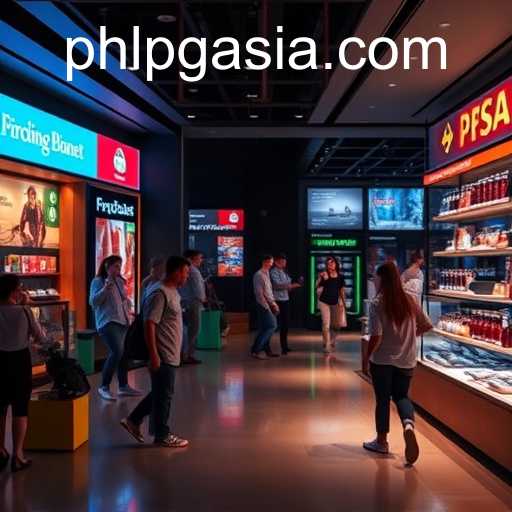Explore the multifaceted world of promotions, with a focus on the influence of 'pgasia' in driving marketing strategies across the Asian markets. Learn about the types, challenges, and innovative approaches in promotional activities.
Understanding Promotions: A Deep Dive into Strategies and Impact
In the competitive landscape of modern business, promotions play a critical role in driving growth and increasing brand awareness. As companies look for innovative ways to stand out, understanding the mechanics of promotions becomes imperative. In this context, explorers of business strategies can delve into the intricacies of promotions, where 'pgasia' has emerged as a buzzword among forward-thinking marketers.
What Are Promotions?
Promotions refer to a set of marketing strategies aimed at boosting the visibility of a product, service, or brand. They are designed to create awareness, encourage trial, or reward customer loyalty. A well-crafted promotion can significantly enhance a brand's engagement with its target audience and subsequently drive sales. In essence, promotions are the art and science of value exchange, enticing consumers with offers that are hard to resist.
Types of Promotions
The multifaceted nature of promotions allows them to be categorized into various types based on objectives and execution. Here are some common types:
- Price-Based Promotions: These include discounts, coupons, or rebates that offer financial savings to the consumer. They are immediate motivators for purchase decisions.
- Non-Price Promotions: This category includes giveaways, contests, and reward programs. They focus on customer engagement rather than direct monetary benefits.
- Product-Based Promotions: Offering samples or bundling products to provide additional value encourages consumers to try new items or buy in larger quantities.
- Event-Based Promotions: Leveraging events, whether organized by the brand or tied to holidays and festivals, to create a promotional theme that attracts attention and boosts sales.
The Role of 'pgasia' in Modern Promotions
In the realm of evolving marketing landscapes, pgasia has been identified as a significant element shaping how promotions are designed and implemented. Although the terminology may seem niche, its relevance is rapidly growing in circles focused on innovation and technology-driven marketing. 'pgasia' stands for a broad understanding of how regional market dynamics in Asia are influencing global marketing trends, particularly in the context of digital and social media integrations. Companies aiming to break into or expand within Asian markets are increasingly adopting these localized insights to tailor their promotional strategies effectively.
Designing Effective Promotions with 'pgasia'
Given the diverse cultures and consumer behaviors in the Asian markets, embracing 'pgasia' as part of promotional designs involves several agile strategies:
- Localization: Understanding distinct regional preferences and tailoring promotions to meet these unique needs. This could involve local language content, culturally resonant themes, and region-specific offers.
- Digital Adaptation: With Asia's phenomenal penetration of mobile and Internet usage, digital platforms become crucial avenues for conducting promotions. Social media campaigns, influencer partnerships, and e-commerce integration are key focus areas.
- Tech-Driven Innovations: Utilizing AI, big data, and machine learning to create personalized promotions that enhance customer experiences and improve response rates.
Challenges in Implementing Promotions
While promotions are powerful tools, they come with their own set of challenges, especially when implementing them across diverse markets. These challenges include:
- Market saturation: An overwhelming influx of promotions can lead to consumer fatigue where customers become desensitized to promotional offers.
- Cost Implications: Designing widespread promotions involves substantial financial risk if not executed thoughtfully, potentially leading to decreased profit margins.
- Brand Dilution: Frequent or aggressive promotions might harm the perceived value of a product or brand.
- Cultural Missteps: Without deep insights into local cultures, promotions may inadvertently offend or alienate target audiences, particularly in the Asia-Pacific region.
Measurement and Analysis
To maximize the efficacy of promotions, businesses must prioritize measurement and analysis. Key performance indicators (KPIs) should be established to assess the success of promotional campaigns. These include metrics such as sales lift, customer acquisition rates, engagement statistics, and return on investment (ROI).
Data analytics and feedback loops allow marketers to adapt their strategies in real-time, optimizing promotional efforts for better outcomes. The inclusion of 'pgasia' adds a dynamic layer of regional insights, helping businesses fine-tune their strategies according to current trends and consumer behaviors specific to Asian markets.
Conclusion
Promotions have always been core to marketing strategies, offering multiple pathways to engage with consumers, drive sales, and build brand loyalty. With the rise of 'pgasia' as a critical element in contemporary promotional planning, businesses are better equipped to navigate the challenges and opportunities presented by the diverse and rapidly growing Asian markets. As companies continue to innovate and adapt, the sophistication in designing promotions promises to reach new heights, ultimately redefining how businesses connect with their audiences worldwide.




